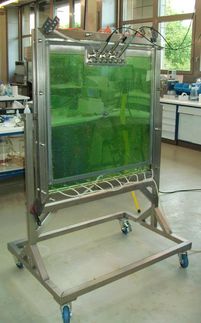Biotechnology Contributes to Significant Decrease in Plowing
Sustainable agricultural practices benefit farmers, environment, society
Advertisement
According to Monsanto, since the introduction of biotech crops in 1996, farmers have reduced - and, in some cases, completely stopped - plowing or tilling the soil to eliminate weeds and prepare fields for planting. The benefits of conservation tillage range from less erosion to improved wildlife habitat to a reduction in Greenhouse Gases and fuel use.
"Our problem with erosion was very serious and it was very damaging to the environment to the extent that, in these crops, to produce one ton of grain in Brazil, we lost 10 tons of soil per hectare per year. We solved this problem by eliminating tillage," says Almir Rebelo, grower advisor and president of Friends of the Earth, a Brazilian grower organization.
With conservation tillage, farmers leave the stubble or plant residue on the soil's surface, rather than plowing or disking it into the soil. The new crop is planted directly into this stubble, and GM (genetically modified) herbicide-tolerant plants make it possible and practical for growers to control weeds in the crop by applying an herbicide rather than plowing.
A reduction in plowing means a decrease in the number "tractor trips" across a field - resulting in fuel savings and a reduction in greenhouse gases. "Looking at the impact on greenhouse gas emissions, the technology has helped deliver important savings," says Graham Brookes, an agricultural economist and director of UK-based PG Economics. "In 2004, 10 billion kilograms less carbon dioxide have been released into the atmosphere. And that's equivalent to taking 20 percent of the cars in the United Kingdom off the road for a year."
In the United States alone, farmers have increased no-till crop acres by 35 percent since 1996 when GM crops were first planted. "We no longer have to till the fields to control weeds, where we used to have to till two, three times and use more diesel and jeopardize the soil to more erosion," says Terry Wanzek, a U.S. corn and soybean farmer.
"As a result of us keeping crop residue on the ground, we have a new foraging opportunity for wildlife," says U.S. cotton, corn and soybean farmer Jay Hardwick. "So we're seeing a new happening on the landscape in terms of wildlife emergence. Not only top of it, but underneath. Earthworms are coming back to play, and earthworms are strategic in getting water into the soil structure."
The impact of conservation agriculture has been just as significant to farmers in the developing world. "We do not have to burn the residue in our harvest anymore," says Jerry Due, a Philippine corn farmer. "We just allow the residue to decompose in the field to become fertilizers."



























































